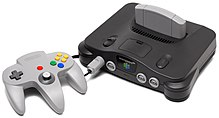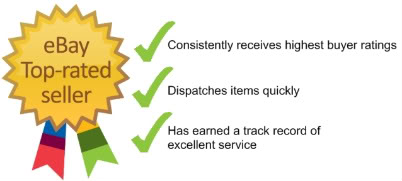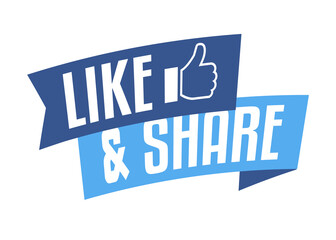NOTE: Due to the nature of antique and vintage items, all items are sold "AS IS" and sales are final, we do not accept returns. If you are unsure about an item and need additional photos or have any questions, please notify us prior to making your purchase. We would be happy to hear from you. Thanks again for looking!
 WARNING: Freshwater Creek Pickers sells adult collectable products for purchase by adults 18 years and over. If any product you are purchasing is intended for a child please assume the following warning may apply to that product. WARNING: CHOKING HAZARD -- Small parts. Not for children under 3 yrs.
WARNING: Freshwater Creek Pickers sells adult collectable products for purchase by adults 18 years and over. If any product you are purchasing is intended for a child please assume the following warning may apply to that product. WARNING: CHOKING HAZARD -- Small parts. Not for children under 3 yrs.


Nintendo 64
From Wikipedia, the free encyclopedia
The Nintendo 64 (N64) is a home video game console developed by Nintendo. It was released on June 23, 1996, in Japan; on September 29, 1996, in North America; and on March 1, 1997, in Europe and Australia. The successor to the Super Nintendo Entertainment System, it was the last major home console to use cartridges as its primary storage format until the Nintendo Switch in 2017. As a fifth-generation console, the Nintendo 64 primarily competed with the Sony PlayStation and the Sega Saturn.
Development began in 1993 in partnership with Silicon Graphics, using the codename Project Reality, then a test model and arcade platform called Ultra 64. The final design was named after its 64-bit CPU, which aided in the console's 3D capabilities. Its design was mostly complete by mid-1995 and launch was delayed until 1996 for the completion of the launch games Super Mario 64, Pilotwings 64, and Saikyō Habu Shōgi (exclusive to Japan). The charcoal-gray console was followed by a series of color variants. Some games require the Expansion Pak accessory to increase system RAM from 4 MB to 8 MB, for improved graphics and functionality. The console mainly supports saved game storage either onboard cartridges or on the Controller Pak accessory. The 64DD peripheral drive hosts both exclusive games and expansion content for cartridges, with many further accessories plus the defunct Internet service Randnet, but it was a commercial failure and was released only in Japan.
Time named it Machine of the Year in 1996, and in 2011, IGN named it the ninth-greatest video game console of all time. The Nintendo 64 was discontinued in 2002 following the 2001 launch of its successor, the GameCube. The Nintendo 64 was critically acclaimed and remains one of the most recognized video game consoles.
History
Background
"At the heart of the [Project Reality] system will be a version of the MIPS(r) Multimedia Engine, a chip-set consisting of a 64-bit MIPS RISC microprocessor, a graphics co-processor chip and Application Specific Integrated Circuits (ASICs)". "The product, which will be developed specifically for Nintendo, will be unveiled in arcades in 1994, and will be available for home use by late 1995. The target U.S. price for the home system is below $250". "For the first time, leading-edge MIPS RISC microprocessor technology will be used in the video entertainment industry [and already] powers computers ranging from PCs to supercomputers".
—SGI press release, August 23, 1993.
Following the video game crash of 1983, Nintendo led the industry with its first home game console, the Famicom, originally released in Japan in 1983 and later released internationally as the Nintendo Entertainment System (NES) beginning in 1985. Though the NES and its successor, the Super Nintendo Entertainment System (SNES), were commercially successful, sales for the SNES decreased as a result of the Japanese recession. Competition from emerging rival Sega's 32-bit Saturn console over Nintendo's 16-bit SNES emphasized Nintendo's need to develop improved SNES hardware or risk losing market dominance to its competitors. The Atari 5200, 7800, Lynx, and Jaguar also competed with Nintendo during this time.
Nintendo sought to enhance the SNES with a proposed CD-ROM peripheral, to be developed in partnership with other companies. Contracts with CD-ROM technology pioneers Philips and Sony failed after some hardware prototypes, and no games from Nintendo or other interested third parties were developed. Philips used the software portion of its license by releasing original Mario and Zelda games on its competing CD-i console, and Sony salvaged its internal progress to develop the PlayStation. Nintendo's third-party developers protested its strict licensing policies.
Development
Silicon Graphics, Inc. (SGI), a long-time leader in graphics computing, was exploring expansion by adapting its supercomputing technology into the higher volume consumer market, starting with the video game market. SGI reduced its MIPS R4000 family of enterprise CPUs, to consume only 0.5 watts of power instead of 1.5 to 2 watts, with an estimated target price of US$40 instead of US$80–200. The company created a design proposal for a video game chipset, seeking an established partner in that market. Jim Clark, founder of SGI, offered the proposal to Tom Kalinske, who was the CEO of Sega of America. The next candidate would be Nintendo.
Kalinske said that he and Joe Miller of Sega of America were "quite impressed" with SGI's prototype, and invited their hardware team to travel from Japan to meet with SGI. The engineers from Sega Enterprises said that their evaluation of the early prototype had revealed several hardware problems. Those were subsequently resolved, but Sega had already decided against SGI's design. Nintendo disputed this account, arguing that SGI chose Nintendo because Nintendo was the more appealing partner. Sega demanded exclusive rights to the chip, but Nintendo offered a non-exclusive license. Michael Slater, publisher of Microprocessor Report said, "The mere fact of a business relationship there is significant because of Nintendo's phenomenal ability to drive volume. If it works at all, it could bring MIPS to levels of volume [SGI] never dreamed of."
Jim Clark met with the CEO of Nintendo at the time, Hiroshi Yamauchi, in early 1993, initiating Project Reality. On August 23, 1993, the companies announced a global joint development and licensing agreement surrounding Project Reality, projecting that the yet unnamed product would be "developed specifically for Nintendo, would be unveiled in arcades in 1994, and would be available for home use by late 1995 ... below $250". This announcement coincided with Nintendo's August 1993 Shoshinkai trade show.
SGI had named the core components Reality Immersion Technology, which would be first used in Project Reality: the MIPS R4300i CPU, the MIPS Reality Coprocessor, and the embedded software. Some chip technology and manufacturing was provided by NEC, Toshiba, and Sharp. SGI had recently acquired MIPS Computer Systems (renamed to MIPS Technologies), and the two worked together to be ultimately responsible for the design of the Reality Immersion Technology chips under engineering director Jim Foran and chief hardware architect Tim Van Hook.
The initial Project Reality game development platform was developed and sold by SGI in the form of its Onyx supercomputer costing US$100,000–US$250,000 (equivalent to $513,920 in 2023) and loaded with the namesake US$50,000 RealityEngine2 graphics boards and four 150 MHz R4400 CPUs. Its software includes early Project Reality application and emulation APIs based on Performer and OpenGL. This graphics supercomputing platform had served as the source design which SGI had reduced down to become the Reality Immersion Technology for Project Reality.
The Project Reality team prototyped a game controller for the development system by modifying a Super NES controller to have a primitive analog joystick and Z trigger. Under maximal secrecy even from the rest of the company, a LucasArts developer said his team would "furtively hide the prototype controller in a cardboard box while we used it. In answer to the inevitable questions about what we were doing, we replied jokingly that it was a new type of controller—a bowl of liquid that absorbed your thoughts through your fingertips. Of course, you had to think in Japanese..."
On June 23, 1994, Nintendo announced the official name of the still unfinished console as "Ultra 64". The first group of elite developers selected by Nintendo was nicknamed the "Dream Team": Silicon Graphics, Inc.; Alias Research, Inc.; Software Creations; Rambus, Inc.; MultiGen, Inc.; Rare, Ltd. and Rare Coin-It Toys & Games, Inc.; WMS Industries, Inc.; Acclaim Entertainment, Inc.; Williams Entertainment, Inc.; Paradigm Simulation, Inc.; Spectrum Holobyte; DMA Design Ltd.; Angel Studios; Ocean; Time Warner Interactive; and Mindscape.
By purchasing and developing upon Project Reality's graphics supercomputing platform, Nintendo and its Dream Team could begin prototyping their games according to SGI's estimated console performance profile, prior to the finalization of the console hardware specifications. When the Ultra 64 hardware was finalized, that supercomputer-based prototyping platform was later supplanted by a much cheaper and fully accurate console simulation board to be hosted within a low-end SGI Indy workstation in July 1995. SGI's early performance estimates based upon its supercomputing platform were ultimately reported to have been fairly accurate to the final Ultra 64 product, allowing LucasArts developers to port their Star Wars game prototype to console reference hardware in only three days.
The console's design was publicly revealed for the first time in late Q2 1994. Images of the console displayed the Nintendo Ultra 64 logo and a ROM cartridge, but no controller. This prototype console's form factor would be retained by the product when it eventually launched. Having initially indicated the possibility of utilizing the increasingly popular CD-ROM if the medium's endemic performance problems were solved, the company now announced a much faster but space-limited cartridge-based system, which prompted open analysis by the gaming press. The system was frequently marketed as the world's first 64-bit gaming system, often stating the console was more powerful than the first Moon landing computers. Atari had already claimed to have made the first 64-bit game console with their Atari Jaguar, but the Jaguar only uses a general 64-bit architecture in conjunction with two 32-bit RISC processors and a 16/32-bit Motorola 68000.
Later in Q2 1994, Nintendo signed a licensing agreement with Midway's parent company which enabled Midway to develop and market arcade games with the Ultra 64 brand, and formed a joint venture company called "Williams/Nintendo" to market Nintendo-exclusive home conversions of these games. The result is two Ultra 64 branded arcade games, Killer Instinct and Cruis'n USA. Not derived from Project Reality's console-based branch of Ultra 64, the arcade branch uses a different MIPS CPU, has no Reality Coprocessor, and uses onboard ROM chips and a hard drive instead of a cartridge. Killer Instinct features 3D character artwork pre-rendered into 2D form, and computer-generated movie backgrounds that are streamed off the hard drive and animated as the characters move horizontally.
Previously, the plan had been to release the console with the name "Ultra Famicom" in Japan and "Nintendo Ultra 64" in other markets. Rumors circulated attributing the name change to the possibility of legal action by Konami's ownership of the Ultra Games trademark. Nintendo said that trademark issues were not a factor, and the sole reason for any name change was to establish a single worldwide brand and logo for the console. The new global name "Nintendo 64" was proposed by Earthbound series developer Shigesato Itoi. The prefix for the model numbering scheme for hardware and software across the Nintendo 64 platform is "NUS-", a reference to the console's original name of "Nintendo Ultra Sixty-four".
Read More: https://en.wikipedia.org/wiki/Nintendo_64

Original Set-Up Instructions Example Only! (Not Included)




















